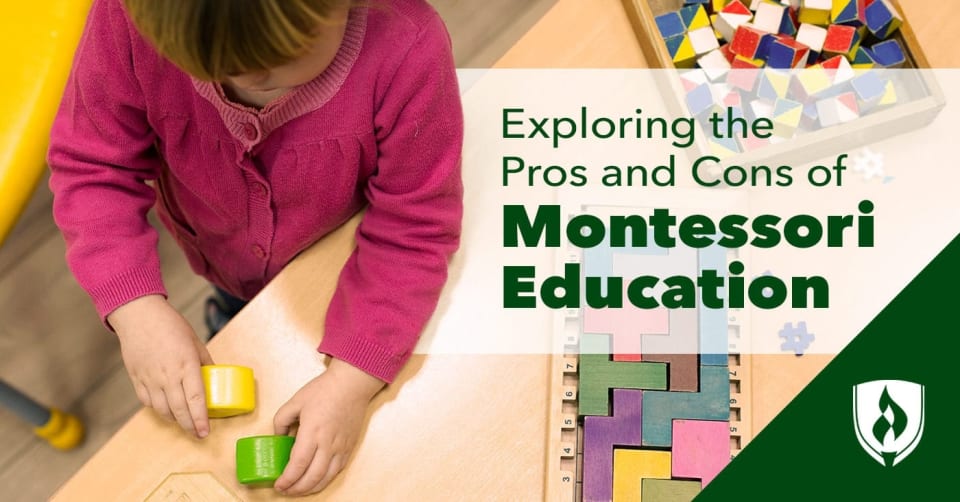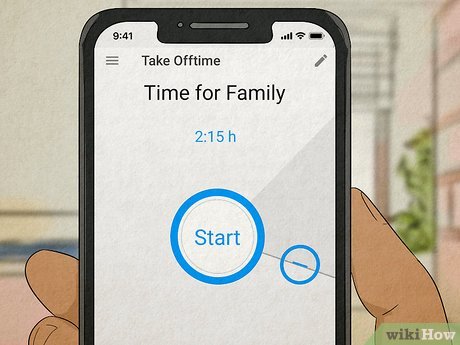The United States education system is one of the most controversial systems in the world. There are many pros and cons to the way it is set up and run. The biggest pro would be that it gives everyone an equal opportunity to get a quality education.
The biggest con would be that it is very expensive and often times does not provide enough financial aid for students who need it. Another con would be that the curriculum is often times not challenging enough, causing students to become bored and apathetic towards learning.
There are a lot of pros and cons to the US education system. On one hand, it is one of the most prestigious education systems in the world. On the other hand, it is also one of the most expensive.
And for many students, it can be very competitive and stressful. Here are some pros and cons of the US education system:
PROS:
-The US education system is known for its high quality. Many top universities are located in the United States, and these schools attract some of the best students from around the globe.
-The US education system also offers a lot of flexibility.
Students can choose from a wide range of programs and majors, and they have the opportunity to tailor their education to their individual needs and interests.
-Another pro is that there are many opportunities for extracurricular activities in the United States. From sports to music to clubs and organizations, there’s something for everyone outside of the classroom.
This can be a great way to make friends, explore new interests, and learn more about yourself.
Pros of Us Education System
There are a number of pros to the United States education system. One pro is that the US has a long history of commitment to education. This means that there are well-established educational institutions and a wealth of resources available to students.
Another pro is that the US education system is very diverse. This diversity allows students to find programs and schools that fit their individual needs and interests. Additionally, the US education system is constantly evolving and improving.
This means that students have access to the latest teaching methods and resources. Finally, the US education system provides opportunities for students to gain real-world experience through internships and other hands-on learning opportunities.
Cons of Us Education System
It’s no secret that the United States education system has its flaws. From overcrowded classrooms and underpaid teachers to outdated curriculum and standardized testing, there are a number of factors that contribute to the cons of our education system. Here are just a few of the biggest issues:
1. Overcrowded Classrooms
One of the most glaring problems with our education system is the fact that classrooms are often overcrowded. This makes it difficult for students to receive individualized attention from their teachers and results in a less than ideal learning environment.
Additionally, overcrowding can lead to disciplinary problems as students become restless and disruptive.
2. Underpaid Teachers
Another major issue facing our education system is the fact that teachers are woefully underpaid.
In addition to earning significantly less than their counterparts in other developed countries, American teachers also have to contend with large class sizes, inadequate resources, and little job security. As a result, many talented individuals are discouraged from pursuing careers in teaching, further exacerbating the problem.
Is the American Education System Bad
There are a number of factors that contribute to the answer this question. The American education system is not bad, but it certainly has its flaws. One of the biggest problems is the lack of funding for public schools.
This results in large class sizes, outdated textbooks, and insufficient resources for teachers and students alike. Another issue is the high dropout rate; according to recent statistics, one in four American students fails to graduate from high school. This is often due to a lack of engagement or interest in their studies, which can be attributed to a variety of factors including poor teaching methods, unmotivated students, or a general feeling of disconnectedness from the school and its curriculum.
It’s important to note that there are also many positive aspects to the American education system. For instance, there are numerous opportunities for extracurricular activities and enrichment programs outside of the traditional classroom setting. In addition, most schools offer some form of college preparation (such as AP courses) which can help students get a head start on their post-secondary education.
There are also many innovative charter schools popping up across the country that are providing new and exciting ways for students to learn. So while the American education system may have its fair share of problems, there are also many bright spots worth celebrating.
Pros And Cons of Education System
The education system is one of the most important aspects of any society. It plays a vital role in shaping the future of young people and preparing them for the challenges of adulthood. However, there is much debate about whether the education system is fit for purpose and whether it could be improved.
In this blog post, we will explore the pros and cons of the education system to help you make up your own mind.
PROS
1) The education system provides young people with essential life skills.
2) It helps to promote social cohesion by bringing people from different backgrounds together.
3) The education system can instil a love of learning in young people.
4) It can prepare young people for the workforce and help them to find employment.
5) The education system can help to reduce crime rates by giving young people an alternative to a life of crime.
Characteristics of U.S. Education System
The United States education system is one of the most unique in the world. It is a complex system, made up of public and private institutions, with a variety of different educational models. In general, however, there are certain characteristics that define the U.S. education system.
One of the most notable features of the U.S. education system is its emphasis on college preparation. From a very early age, students are encouraged to think about their future careers and what they need to do to achieve their goals. This includes taking rigorous courses and participating in extracurricular activities that will help them stand out when applying to colleges.
Another characteristic of the U.S. education system is its focus on standardized testing. Students in the United States take standardized tests at various points throughout their schooling, including the SAT and ACT for college admission purposes. These tests are meant to provide a common measure of student achievement across different schools and districts.
Finally, the U.S .education system is also known for its high costs . Private schools can be especially expensive, but even public schools require tuition and other fees .
This can make it difficult for families to afford a quality education for their children .
Despite its challenges , the U . S .
education system continues to produce some of the best students in the world . With hard work and dedication , any student can succeed in this competitive environment .
10 Reasons the U.S. Education System is Failing
It’s no secret that the U.S. education system is struggling. Here are 10 reasons why it’s failing our students:
1. Lack of funding: Many schools are underfunded, which means they don’t have enough resources to provide a quality education for all students.
2. Inequality: There is a large achievement gap between low-income and high-income students. This gap is only getting wider as time goes on.
3. Standardized testing: The current focus on standardized testing is taking the joy out of learning for both teachers and students.
It’s also putting unnecessary pressure on everyone involved.
4. Teacher turnover: Due to the lack of funding and support, many teachers are leaving the profession altogether. This creates an even bigger shortage of qualified educators in our already understaffed schools.
5.. Rigid curriculum: Most schools follow a very rigid curriculum that doesn’t allow for much creativity or flexibility. This can be quite boring for both teachers and students, leading to disengagement in the classroom.
.
6.. Outdated teaching methods: Many classrooms still rely on outdated teaching methods that don’t engage today’s digital-native students.
.
7.. Technology problems: Even though technology can be a great asset in the classroom, many schools are struggling to keep up with the latest advancements due to a lack of funding.
.
8.. Bullying: Unfortunately, bullying is still a big problem in schools across the country..
9.. School violence: Violent incidents in schools have been on the rise in recent years, making parents and students alike feel unsafe at school..
10.. College costs: The rising cost of college tuition is preventing many talented students from pursuing higher education altogether..
All of these problems contribute to the failing state of our education system.
Pros of the Education System
The education system is the backbone of any society. It shapes the future of its citizens and moulds them into productive members of the workforce. A well-functioning education system is essential for a country to prosper and compete in today’s global economy.
Despite this, there are many developed countries with sub-standard education systems. In some cases, such as the United States, educational inequality is a major problem.
There are many advantages to having a good education system.
Firstly, it provide equal opportunities for all children regardless of their socio-economic background. This is important because it gives everyone a fair chance to succeed in life. Secondly, a good education system produces skilled workers who can contribute to the economy and help drive innovation and growth.Thirdly, educated citizens are more likely to be law-abiding and have respect for others and their property.
This creates a safer and more cohesive society. Finally, an educated population is generally healthier and has a longer life expectancy than those who are illiterate or have little schooling.
Despite these clear benefits, there are still many countries with poor education systems.
One reason for this is that investing in education is expensive and often fails to produce immediate results that can be seen or measured by policymakers. Another challenge facing educators is that not all students learn at the same pace or in the same way – some need more support than others to reach their full potential .
U.S. Education System Ranking
The United States has been a world leader in education for centuries. But in recent years, its educational system has been slipping. In the latest global ranking of education systems, the U.S. ranks 36th out of 38 developed countries.
That’s down from 28th just four years ago and behind countries like Poland, Estonia, and Vietnam.
What’s behind this decline? There are many factors, but one big reason is that other countries have been investing more heavily in education while the U.S. has fallen behind.
As a result, American students are not getting the quality education they need to compete in the global economy.
This is a worrisome trend with serious implications for the future of our country. If we want to remain a world leader, we need to invest more in our educational system so that our students can compete with their counterparts around the globe.

Credit: www.rasmussen.edu
What are the Pros of the Us Education System?
The US education system has many pros, including the following:
1. The US education system is highly respected around the world. This means that if you have a degree from a US college or university, it will be recognized and respected by employers in other countries.
2. The US education system is very diverse. Students from all over the world come to study in the United States, which exposes everyone to different cultures and worldviews. This can be a great learning experience.
3. There are many excellent colleges and universities in the United States to choose from. No matter what your interests or academic goals, you’re likely to find a school that’s a good fit for you.
4. The level of education in the United States is generally quite high.
Students receive a solid foundation in core subjects like reading, writing, and math. They also learn about critical thinking and problem-solving skills that will benefit them throughout their lives.
What are Some Major Problems With the American Education System?
There is no one-size-fits-all answer to this question, as the American education system varies widely from state to state. However, there are some common themes that emerge when discussing the major problems with the American education system.
Firstly, many experts agree that the quality of public education in the United States has been declining in recent years.
This is largely due to inadequate funding, which has led to overcrowded classrooms and a lack of resources for teachers and students. In addition, standardized testing has become increasingly commonplace in schools, leading to teaching to the test rather than focusing on developing critical thinking skills.
Secondly, there is a growing achievement gap between rich and poor students in America.
This means that children from wealthier families are more likely to succeed academically than those from poorer backgrounds. This disparity is often attributed to unequal access to quality education, as well as factors such as poverty and racism.
Finally, college costs have been rising steadily for many years, making it increasingly difficult for young people from lower-income families to access higher education.
Student debt levels are also at an all-time high, meaning that many graduates are starting their working lives with a significant financial burden.
These are just some of the major problems facing the American education system today. While there is no easy fix, it is clear that something needs to be done in order to improve educational outcomes for all students in America regardless of their background or socioeconomic status.
What are Cons of Education?
There are a few potential cons of education that could be worth considering. Firstly, the cost of education can be extremely high, particularly if you are looking at private schools or universities. This can mean that it is difficult for people from lower-income backgrounds to access education, which can in turn lead to inequality and social division.
Secondly, the educational system itself is not always perfect and there can be a lot of pressure on students to conform to certain standards and expectations. This can lead to frustration and even disillusionment with the whole process. Finally, some people argue that too much emphasis is placed on formal qualifications these days and that other important life skills are being neglected as a result.
What are the Pros And Cons of Public Education?
There are a number of pros and cons to public education. On the plus side, public education is free for everyone. It is also typically more diverse than private schools, which can be important in terms of exposure to different cultures and viewpoints.
Another advantage of public education is that it generally has better resources than private schools, including things like libraries and laboratories.
On the downside, public education can sometimes be less individualized than private schooling. Class sizes are often larger in public schools, which can make it difficult for teachers to give each student the attention they need.
Additionally, funding issues can lead to problems with things like teacher salaries and school maintenance.
Pros and Cons in the American Education System | Free Logic
Conclusion
There are many different opinions on the United States education system. Some people believe that the system is preparing students for the real world, while others think that it is setting them up for failure. There are pros and cons to both sides of the argument.
The education system in the United States has been around for centuries. It has evolved over time, but there are still some aspects of it that remain unchanged. One of the biggestPros of the US education system is that it offers a lot of opportunitiesfor students to succeed.
There are many different types of schools, programs, and scholarships available to students who want to further their education. There are also a lot of resources available to help students succeed in school. Another pro is that the US education system is very diverse.
Students from all over the world come to study in the United States because they know that they will be able to find a program or school that fits their needs and interests. One conof the US education system is that it can be very expensive for familiesto send their children to college or university. The cost of tuition, room and board, and other expenses can add up quickly.
Another con is that some people believe that the US education systemisn’t doing enough to prepare students for life after graduation.



